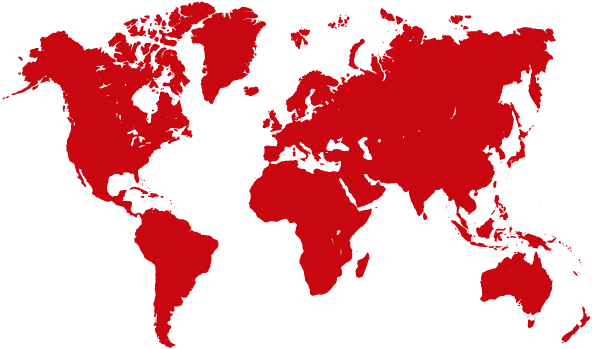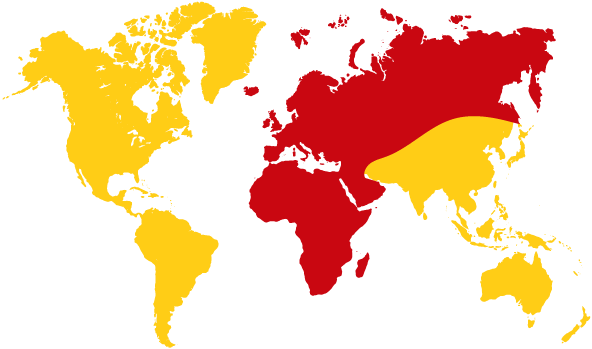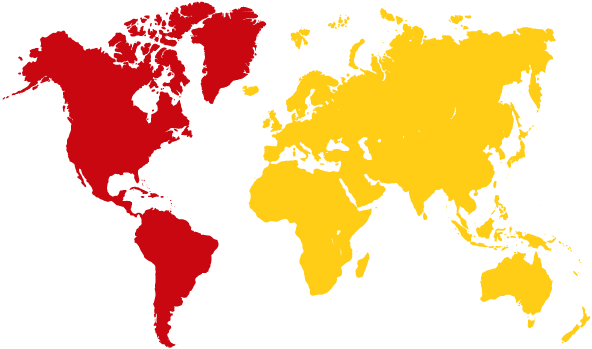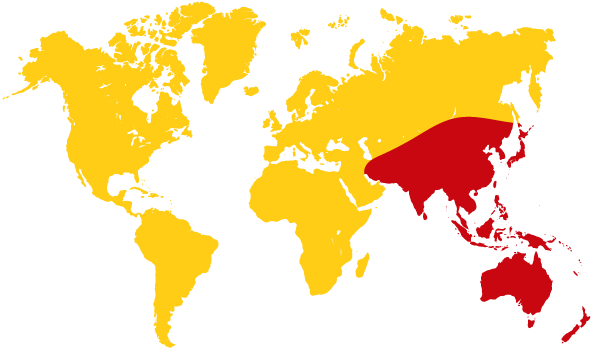From: Jim Linton, VK3PC
Sent: Thursday, June 26, 2008 9:16 AM
Subject: China earthquake report at GAREC
The emergency communications provided by China’s radio amateurs in the aftermath of the devastating magnitude 8 Sichuan earthquake has now ended, although some remain on standby for rapid re-activation if needed.
IARU Region 3 Chinese Radio Sports Association (CRSA) disaster communication liaison Fan Bin BA1RB reports that several hundred hams took part to help the disaster recovery and relief efforts.
This began almost immediately after the huge ‘quake on the 12th of May and it continued through until the 13th of June.
A number of radio amateurs travelled into the epicentre area, a difficult task due to earthquake damaged roads, to set up communications.
In the early days long distance telephone lines were either cut or congested and this is where amateur radio HF links were used, including one in the provincial city of Chengdu to give the Red Cross a link to Beijing.
VHF and UHF repeaters were in heavy use, both those which survived the quake and others pressed into service to provide much needed local communications including front line rescue and recovery activity.
Amateur radio was used to provide coordinating communications for cars that were used to ferry supplies and transport the wounded immediately after the ‘quake.
Amateur radio operators across the country made donations of equipment and supplies and the CRSA thanks them and all international radio societies and individuals for the support given.
The CRSA has produced a powerpoint slide presentation to give an overview of the role emergency communications provided during the disaster, and what is proposes for the future.
The slide show was presented this week at the fourth Global Amateur Radio Emergency Communications Conference (GAREC-08) in Friedrichshafen, Germany, by the IARU Region 3 Chairman, Michael Owen VK3KI.
GAREC organisers and the conference delegates were most pleased to see the CRSA presentation and learn more about the role played by amateur radio after the Sichuan earthquake.
— Jim Linton VK3PC, Chairman, IARU R3 Emergency Communications Committee.
From: Jim Linton, VK3PC
Sent: Tuesday, May 27, 2008 8:22 PM
Subject: Situation report #3 on China earthquake
Situation report #3 on China earthquake
As the disaster recovery efforts continue following China’s most powerful earthquake, the Information Office of the State Council reported (on 26 May) that the death toll had reached 65,080.
Government officials and news media have recognised that when communications failed after the Sichuan earthquake on 12 May, it was amateur radio operators who stepped in to provide vital links.
In the past two weeks there has been more than five million people made homeless. The most in-demand materials and supplies for the disaster area are tents and medicines. Disease prevention is also at a very critical stage.
China Central Television (CCTV) reported on 26 May, ‘When all other communication means failed, amateur radio operators came out! An amateur radio emergency communication network was setup and one of the commanders, Liu hu called for amateur radio operators on air to provide services for disaster relief.
‘Thankfully one main repeater survived during the earthquake, this repeater provided 100km coverage to Mianyang. Amateur radio operators from Chengdu, Shenzhen, He’nan went to the centre of the disaster area, set up repeaters in Beichuan county, and provided various valuable first hand information from the centre.’
The IARU radio society, CRSA said it hoped to report later more detailed information on the role of amateur radio emergency communications in the big earthquake.
In the meantime it advises that the main organiser of local amateur radio traffic, Luo Minglin BY8AA continuously coordinated VHF/UHF communications for a 100 km radius from Chengdu, the capital of southwest China’s province of Sichuan.
More repeaters were set up in both Beichuan and Mianyang, among the worst hit areas outside the epicentre, to form an effective amateur radio communication network.
Zhang Zhen BG8DOU reports that right after the earthquake, two ham radio operators drove to the centre of the earthquake area and had a repeater set up by the morning of 13 May.
This repeater enabled the transmission of rescue instructions, status reports and was a main communication channel for public use.
Among the traffic the repeater carried were communications for the Mayor of Mianzhu City, who gave orders to those on the front line rescue and recovery activity.
The CRSA appreciates the support given by the amateur radio community in helping to keep clear the emergency communication frequencies of 7050kHz, 7060kHz and 14270kHz during the critical period after the earthquake.
The CRSA said, ‘Thanks for the cooperation and efforts made by all amateur radio societies.’
Those frequencies are no longer needed for emergency communications, but should a severe aftershock occur, there will be a call by the CRSA for them to be kept clear again.
The radio society also acknowledged having received inquiries and the ‘warm concerns’ of amateur radio societies worldwide.
(Fan Bin BA1RB on behalf of CRSA,
via IARU R3 Disaster Communications Committee Chairman Jim Linton VK3PC)
From: Steve, G4HPE
Sent: Friday, May 23, 2008 7:04 AM
Subject: [raynethf] China Radio Sports Team depart for earthquake zone
Good photos attached (1.3 MB) for your interest.
Regards,
Steve G4HPE
From: Steve, G4HPE
Sent: Thursday, May 22, 2008 5:08 AM
Subject: [raynethf] Chinese report QRM to 40m emercomms
Request from China Radio Sports Association (translated):
“7.050 MHz frequency — because of a strong QRM, emergency communications temporary QSY to 7.030 MHz. CRSA headquarters appeals to those causing QRM to show a rational and restrained, all to listen to the main emergency communications. At the same time not to take up emergency communication frequencies for unnecessary communication, such as greetings and asked signal report. Language of communication should be brief.”
Regards,
Steve G4HPE
From: Jim Linton, VK3PC
Sent: Tuesday, May 20, 2008 7:35 PM
Subject: Situation report on China earthquake
The involvement in the Sichuan earthquake disaster of ham radio continues with the latest report that the Red Cross has enlisted the emergency communication skills of radio amateurs.
The IARU radio society, the Chinese Radio Sports Association reports that long distance telephone services were at times congested in the Chengdu area, presumably due to a heavy demand and damage, and it was asked to set up HF station in Chengdu.
Under the callsign BT8RC it established a good channel for the Chinese Red Cross Foundation from Beijing to Chengdu. This is providing communications to enable the relief agency to more effectively carry out its work.
Other cities in the earthquake area had setup or restored VHF and UHF repeaters and amateur radio communication teams to assist with communication.
The Sichuan Radio Sports Association station BY8AA has been helping many others with communication and during one week had an operational log of 300 pages.
The CRSA sends it thanks to the amateur radio community for keeping three frequencies — 7050, 7060 and 14270 kiloHertz clear, these are continuing to be used for emergency communications.
The nation of China is in mourning for the estimated 50,000 people killed in the earthquake on the 12th of May which measured eight on the Richter scale.
It is China’s most deadliest earthquake in 32 years. More than 245,000 were injured and 2 million homeless.
(Information from Fanbin/BA1RB via Jim Linton VK3PC
Chairman IARU R3 Disaster Communications Committee)
From: Fanbin, BA1RB
Sent: Tuesday, May 20, 2008 6:53 PM
Subject: Earthquake QSP from CRSA
This is the second status update report of Sichuan earthquake disaster.
Till 12:00 19, May, 34,073 people killed and 245,108 injured in the May 12 earth quake. China on May 19, Monday began a three-day national mourning for the tens of thousands of people killed in the May 12 earthquake.
BY8AA, the Sichuan radio sports association amateur radio station, published their contact information on internet, including officers contact telephone number, repeater uplink/downlink frequency, etc, help public and other amateur radio operators entered into Sichuan provide an efficient communication way. During the 1 week operation, BY8AA has created 300 pages operation paper log, 30 hours voice recording and 1.5 hours video, and 2GB photo materials.
Now, not only Chengdu, other cities in the earthquake area had setup repeaters and amateur radio communication team to aid communication, the related information was published on internet, showing the repeaters coverage to guide users.
By 17 May, the long distance telephone call sometimes jammed to Sichuan area. Chinese Red Cross Foundation asked CRSA to setup an HF station in Chengdu. The callsign is BT8RC. From 17 May, BT8RC helped CRCF established a good communication channel from Beijing to Chengdu.
Issued by Fanbin/BA1RB
(Via Jim Linton VK3PC, Chairman, IARU R3 Disaster Communnications Committee)
From: Jim Linton, VK3PC
Sent: Friday, May 16, 2008 7:25 AM
Subject: China earthquake disaster — update
The emergency communications response by radio amateurs in China is continuing during the rescue and recovery phase of this major disaster that has resulted in a great loss of life.
IARU R3 Disaster Communications Committee member, Fan Bin BA1RB said, “We have more ham radio operators ready to go for disaster relief, we will do our best as radio amateur operators for the big disaster.”
The earthquake struck in the afternoon local time on 12 May and the immediate response by hams included the IARU radio society CRSA issuing a worldwide alert that a number of HF frequencies were in use for disaster relief.
These are 7050, 7060 and 14270. Fan Bin BA1RB reports soon after the earthquake hit the local UHF/VHF repeaters in Chengdu area were back to operation to provide communications.
It took three days for the public telecommunications network to be restored in most but the remote areas which remain without communications.
The Sichuan radio sports association amateur radio station BY8AA was able to on air in HF band handling many valuable front line emergency messages and had an hourly sked with the CRSA headquarters station BY1PK in Bejing.
Bin Fan BA1RB reports that many radio amateurs in the earthquake epicentre and nearby areas have put up simple antennas from the damaged buildings.
Hams from Beijing, Nanjing, Wuhan and other cities went to Sichuan taking their own requirement.
The disaster has hit mountainous terrain that requires the use of VHF/UHF and HF radio.
— Jim Linton VK3PC, Chairman, IARU R3 Emergency Communications Committee.
From: Steve, G4HPE
Sent: Wednesday, May 14, 2008 4:04 AM
Subject: [raynethf] China Earthquake, frequencies in use
Please promulgate to all radio amateurs:
Michael BD5RV/4 reports that radio amateurs are aiding the relief effort in the Sichuan region of China.
Would all operators please leave the following frequencies clear:
7050kHz
7060kHz
14270kHz
A team of amateurs is said to be operating from the epicentre of the earthquake, Wenchuan, using 40m.
In Chengdu, the UHF repeater survived the earthquake and is now being used to direct ambulances.
Regards,
Steve G4HPE
From: Steve, VR2XMQ
Sent:
Subject: Earthquake hit Sichuan, China
On Monday, May 12 at 0628 UTC, a magnitude 7.8 earthquake hit Sichuan, China. According to the Chinese Radio Sports Association, the Chinese IARU Member-Society, the following frequencies are reserved for emergency services involved in the rescue: 14.270, 7.050 and 7.060 MHz.
The CRSA Web site reports the following:
“On the afternoon of May 12, 2008, Wenchuan Area of China’s Sichuan province was struck by an earthquake. Communications in some of the surrounding areas are currently cut off, and communications in some other areas are experiencing network congestion because of drastically increased traffic.
“Chinese Radio Sports Association therefore calls on its members to take actions to ensure their amateur radio stations to operate properly, and to the extent possible stand by on often used short- wave frequencies. If any radio signal is heard from the disaster area, please do your best to understand what is most needed by people in that area and report it to the local government authority. If people in the surrounding areas need to pass messages to their loved ones over the radio, please help them to get in touch and get the messages across as soon as possible.
“Amateur radio stations in the disaster area and surrounding areas if in working conditions should be used unconditionally to assist the local earthquake disaster relief authorities, and subject to permission by the said authorities, to provide communications services to them. For emergency communications purposes, amateur radio stations may also be used to pass messages for local residents on a temporary basis until local telecommunications services resume. Amateur radio stations of all regions should give way to and stand by for emergency communications.”
Hams on the Ground
At 1757 UTC on Monday, May 12, Liu Hu, BG8AAS, of Chengdu, a town in the province of Sichuan, reported that a local UHF repeater survived the disaster. “It keeps functioning from the first minute and more than 200 local radio hams are now on that repeater. A group of hams from Chengdu has headed for Wenchuan, the center of the quake, trying to set up emergency communication services there,” he said.
Michael Chen, BD5RV/4, said that Yue Shu, BA8AB, also from Chengdu, Sichuan, was reported to be active on the 40 meter emergency frequency on Monday. “Up to now, there has been no further information available from the center zone of the quake. There are a few radio amateurs there, but all of the communications have been cut out, including Amateur Radio,” Chen said.
At 1858 UTC, Liu reported that the local UHF repeater in Chengdu “keeps busy running after the quake. It helps to direct social vehicles to transport the wounded from Dujiangyan, Beichuan and other regions. Another UHF repeater also started working in Mianyan, supported by generators, but they are going to face a shortage of gas.” Chen said that damage in Chengdu remains in the lowest level, but the situation is “very very bad in the counties around. A few towns are said to be destroyed completely. More than 7000 died in the town of Beichuan. Casualties in several other towns are still unknown and not counted in the published numbers. It is a long and sad day.”
Information provided by Michael Ye, BD4AAQ, and Michael Chen, BD5RV/4
Please pass information on to assist, many thanks.
73 Steve, VR2XMQ
From: Zhang Hong, BG1FPX
Sent: Tuesday, May 13, 2008 9:55 PM
Subject: VERY URGENT from CHINA!
Dear Sir,
China hams are using 7.050MHz (including adjacent frequencies) as emergency communication frequency for Sichuan earthquake rescue. Could you kindly inform JARL members to avoid this frequency? Thank you very much!
Best regards,
BG1FPX/Zhang Hong



